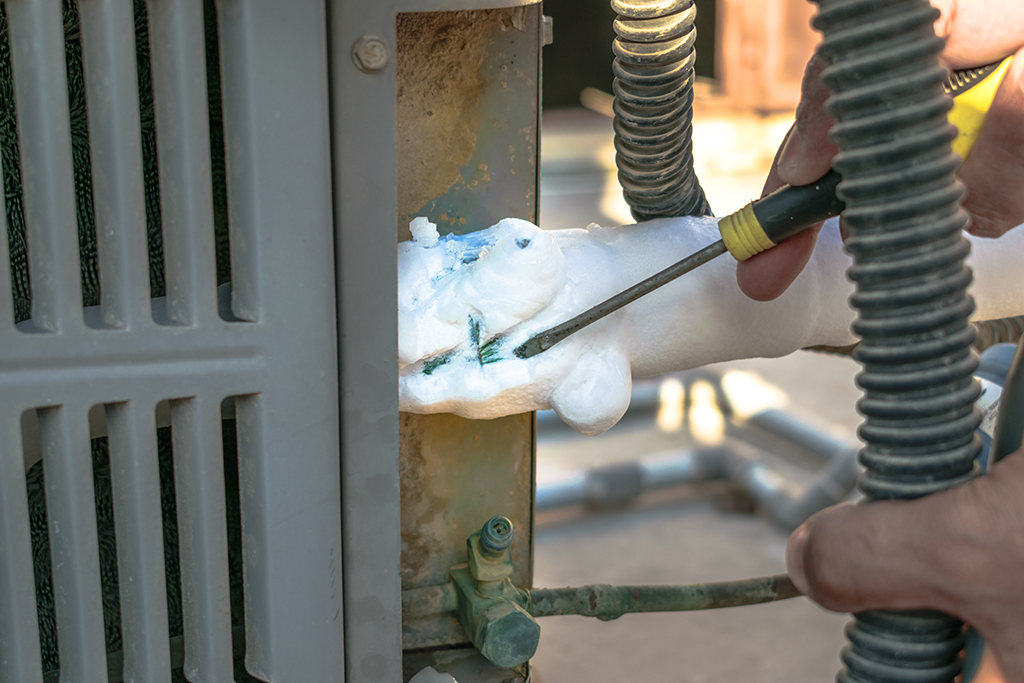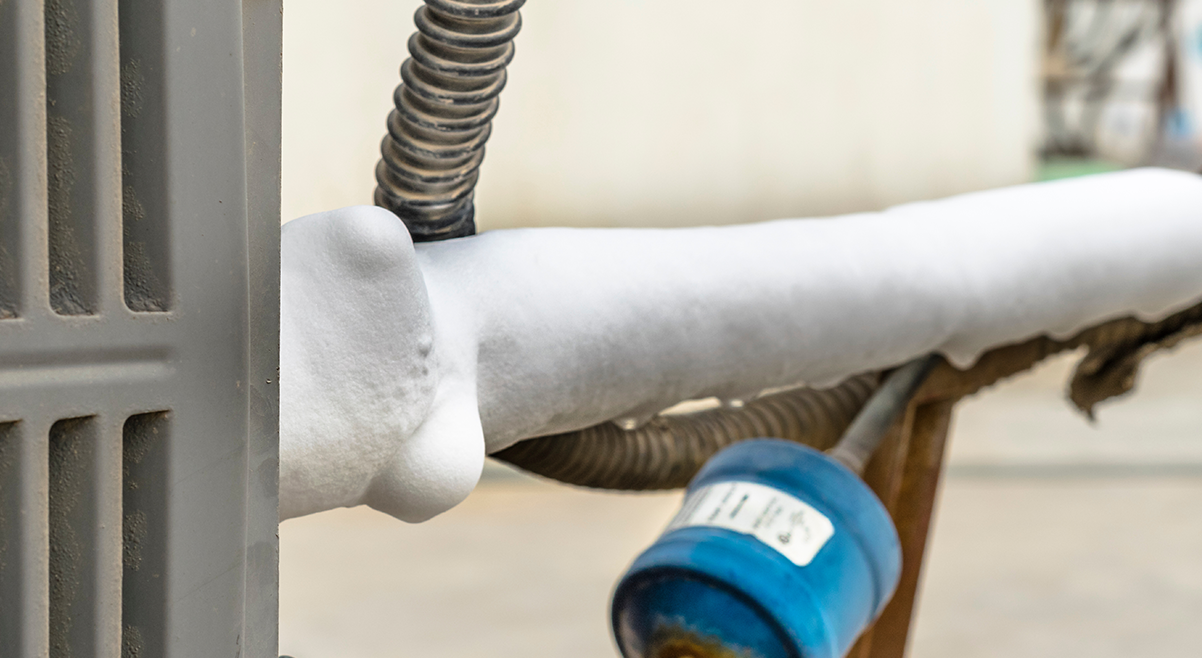How to Handle a Frozen AC Pipe: Professional Guidance
How to Handle a Frozen AC Pipe: Professional Guidance
Blog Article
Here down the page you might get a bunch of very good information relating to What Do I Do If My AC Pipe Is Frozen.

Introduction
Uncovering that your air conditioner pipe is frozen can be concerning, especially during warm summer season when you depend on your air conditioning unit the most. Recognizing what to do in such a circumstance is vital to prevent further damages to your cooling system and ensure your convenience indoors.
Understanding the Causes
A number of aspects can add to the freezing of an air conditioner pipeline. Recognizing these causes can help you address the concern successfully.
Lack of Airflow
One typical source of an icy air conditioner pipeline is inadequate airflow. When the air flow over the evaporator coil is restricted, it can create the coil to go down below freezing temperature, causing ice formation on the pipeline.
Low Refrigerant Levels
Insufficient cooling agent levels in your air conditioner system can also result in a frozen pipeline. Low refrigerant levels can cause the stress in the system to drop, resulting in the freezing of wetness on the evaporator coil.
Cold Weather Conditions
In colder climates, freezing temperatures outside can contribute to the freezing of air conditioner pipes. If your air conditioner device is not properly shielded or if there are leakages in the ductwork, cold air can penetrate the system, creating the pipe to ice up.
Dirty Air Filters
Filthy or blocked air filters can limit air flow in your air conditioner system, causing different issues, including a frozen pipeline. It's important to change or cleanse your air filters routinely to ensure correct air movement and avoid ice buildup.
Indicators of a Frozen Air Conditioning Pipe
Identifying the signs of a frozen air conditioner pipe is vital for prompt action.
Minimized Airflow
If you notice a substantial reduction in airflow from your vents, it can show a frozen pipeline.
Ice Buildup on the Pipe
Visible ice buildup on the refrigerant line or the evaporator coil is a clear sign of an icy air conditioning pipe.
Weird Sounds from the Unit
Uncommon noises, such as hissing or bubbling, originating from your air conditioner system can indicate that there's ice present on the pipeline.
Immediate Actions to Take
When faced with an icy air conditioning pipeline, it's vital to act quickly to avoid more damage to your air conditioning system.
Switching off the AC
The initial step is to turn off your air conditioning system to stop the system from running and exacerbating the issue.
Looking for Blockages
Evaluate the area around the indoor unit for any type of blockages that might be blocking air flow, such as furnishings or drapes.
Thawing the Pipe
You can use gentle approaches like putting towels soaked in cozy water around the frozen pipeline to help thaw it slowly.
Preventive Measures
Taking safety nets can help avoid future occurrences of an icy air conditioner pipeline.
Regular Maintenance Checks
Arrange routine maintenance contact a professional HVAC service technician to make certain that your AC system is running efficiently.
Changing Air Filters
Regularly replace or clean your air filters to stop air movement restrictions and maintain ideal efficiency.
Insulating Exposed Pipes
If your air conditioner pipes are subjected to cool temperature levels, think about protecting them to prevent freezing throughout winter months.
Seeking Professional Help
If DIY approaches fail to fix the problem or if you're not sure concerning exactly how to proceed, it's best to seek assistance from a qualified HVAC specialist.
When DIY Methods Fail
If your attempts to thaw the pipeline or address other problems are not successful, it's time to contact a professional.
Value of Hiring a Professional HVAC Technician
A qualified HVAC specialist has the expertise and devices essential to diagnose and fix problems with your air conditioner system securely and effectively.
Conclusion
Managing an icy a/c pipe can be an aggravating experience, but understanding just how to react can help lessen damages and bring back convenience to your home. By understanding the causes, identifying the indicators, and taking punctual action, you can successfully address the issue and avoid future occurrences.
Frozen AC Line: Why It Happens & What To Do About It
A frozen AC line can be a rather peculiar sight in a place like Phoenix, Arizona where nothing ever freezes. In this post, we’ll discuss what makes an air conditioner line frozen – and what you can do about it.
Dirty Air Filters
Did you know that you should be cleaning or replacing your air filters on a monthly basis? Failing to do this can result in airflow issues that, in turn, cause your evaporator coils and lines to freeze over. You’ll notice a buildup of ice on both components, although the buildup on your pipes will, of course, be more evident unless you open your air condition up to reveal the coils.
What To Do About It
Give your air filter a good cleaning if it’s reusable. If not, replace the filter outright. Next, switch your air conditioner’s fan setting on and leave it there for 2-3 hours. This will draw warm air in, helping to thaw your evaporator coil. You can also check out this article for some tips on cleaning the coils themselves if you’d like to speed the process up. Before you switch the unit back to its normal state, make sure the supply vents are completely unobstructed and free of dust or other debris.
If you keep having this issue even after replacing your filters regularly, contact a local HVAC repair company and have them inspect your evaporator coil, ductwork, and any other components that may be at fault. If you live in the Phoenix, Arizona area, give American Home Water and Air a call.
Low Refrigerant Levels/Leakage
What To Do About It
Contrary to what air conditioner “recharge” companies often tell their clients about refrigerant, it should never need to be simply refilled. You see, refrigerant runs in what experts refer to as a “closed loop.” Refrigerant really shouldn’t be leaving that loop. If it is, you’ve got a leak.
Paying someone to come and pump more refrigerant into your system (aka “recharge” it) isn’t the solution. Doing that will simply kick the can down the road. Besides, refrigerant leaks can be harmful to the environment and people in your home.
Rather, you need to take care of the leak with the help of a technician. Check out this article for some more information about dealing with air conditioners that are leaking refrigerant. Before you contact a technician, switch your thermostat to the off position. Then, switch the fan setting on and let it run for 2-3 hours so the unit can thaw.
Improper Temperature Setting
Improper temperature settings can also cause a drop in your air conditioner’s pressure. What many people don’t realize is that air conditioners are actually designed to run when temperatures have fallen above roughly 60 degrees Fahrenheit. If you run the unit when it’s cold outside, you’ll run into many issues, including frozen components.

As a devoted person who reads on Have a Frozen AC Line? Here’s How to Fix It, I think sharing that piece of content was appropriate. Sharing is nice. Who knows, you could be helping someone out. I praise you for your time. Please come visit our blog back soon.
Schedule Free Estimate Report this page